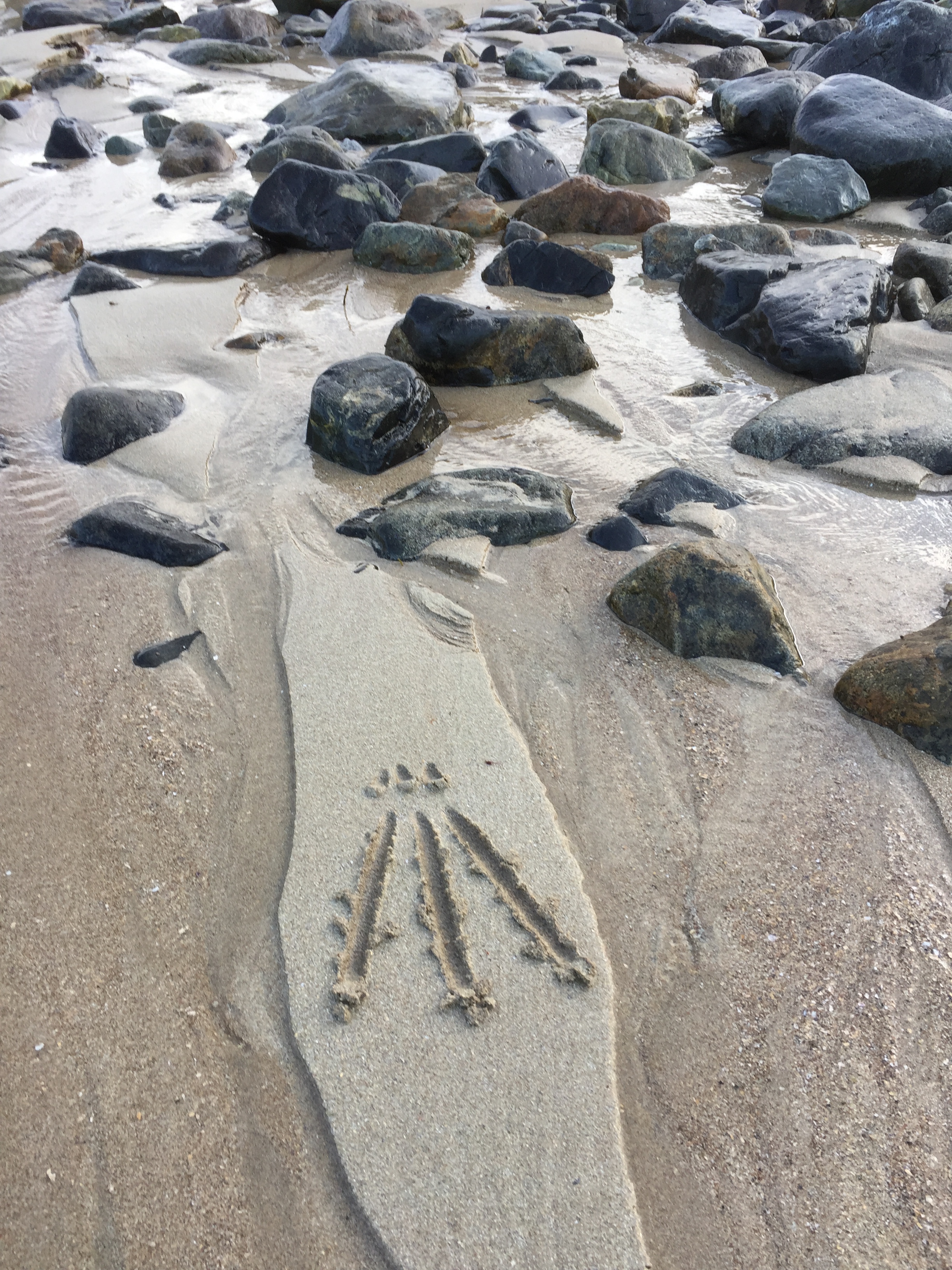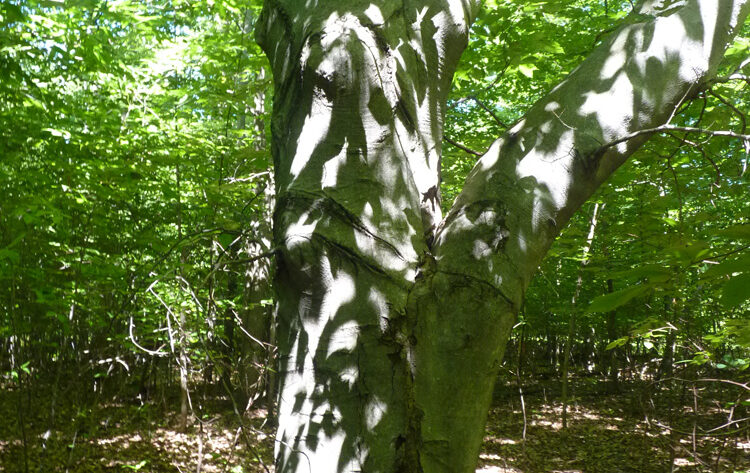A lot of people find druidry because they want to “connect” with nature. They want to attune to nature, feel part of it, gain knowledge and wisdom about it. But what does “connecting” to nature look like in practice? Going out in the woods and feeling good? Knowing the name of trees? Walking with sacred intent in a natural place? Spending time in nature? All above the above? And so, over the next few posts, I want to spend more time with the concept of “connecting to nature” and share some strategies for what people can do to connect with nature in a multitude of ways.
As I’ve written about earlier, part of what I see as the core of druidry as a spiritual tradition is the work of “connection.” In that post, I talked about connecting to nature, connecting to the spirit, and connecting to the creative practices as three ways in which connection is manifest in this tradition. And, I believe, it is this search for connection that underlies so much of the interest in nature-based spiritual paths like druidry and the growing amount of druids worldwide.
A Framework for “Nature Connection”
I find that older books on nature can really offer perspectives that we’ve sometimes forgotten about. For example, The Field Book of Nature Activities and Conservation (1961) by Wiliam Hillcourt, five nature-oriented actions are outlined in the opening chapter. He suggests that we can know nature, probe nature, use nature, do nature, and conserve nature. I think this offers a beginning of a useful framework for thinking about this topic.
Drawing upon his five categories, and adding in my own definitions and additional areas that are pertinent to druids gives us a nature connection framework with four major areas with three specific activities for each area.
Nature Wisdom
The basis of much of nature connection is rooted in building an understanding and knowledge of the living earth. This first category, which I call “nature wisdom” helps us do just that.

- Knowing nature – Knowing nature includes two aspects: knowledge, that is, learning about nature and being able to identify aspects of nature, ecosystems, ecology, botany, and much more. This knowledge is typically gained from books, classes, and teachers. It is the knowledge that is passed on to us as part of human wisdom. While knowing about nature used to be something that every human had, and was part of the formal or informal knowledge that was passed to each generation, for many of us living in western contexts, this often needs to be learned anew. From my perspective, if I am going to honor nature, I better know something about her as well, and that “knowing nature” helps me begin to do that.
- Understanding nature – As the druid’s prayer suggests, there is a distinction between knowledge and understanding. Knowing is having a piece of information in your head (e.g. wild yam is a forest-dwelling vine that has heart-shaped leaves). Understanding is the kind of knowing that can only be gained through direct experience in nature. (Wild yam grows up this tree in this particular pattern and has these variations in the leaves. And it has a good energy about it.) Direct experience leads to understanding. I truly believe that both knowledge and understanding are necessary for building “nature wisdom.”
- Probing nature – Probing nature is not something that everyone does, but it is something that everyone could do. This can mean anything from scientific observations and interactions where we build knowledge about nature to well as building your own understanding of nature through systematic nature journaling, observation, and so forth. This is what the great naturalists did as they built systematic knowledge of nature; this what every citizen scientist does as she logs the first blooms through Project Budburst. This is also what any organic gardener does as he carefully tracks yields of vegetables based on different soil amendments. Asking questions and seeking answers about nature is what “probing nature” is all about.

Nature Engagement
Nature Activity is the second broad category that helps us establish a connection with nature by engaging with and through nature. This category includes how we use nature, interact with nature, and do things in nature.
- Using Nature – That humans can–and need to–use nature is a key part of not only our connection with nature, but also for our survival. Using nature is twofold: on one hand, it is about learning how to use the natural world for meeting our needs; on the other, it is about the reciprocation activities that must be present in that use so that it is sustainable over a period of time. So using nature includes learning the uses of many plants, animals, and other aspects of nature and would include foraging, natural building, hunting, and bushcraft skills. This is about how to work with nature to bring productive abundance to our gardens and lands, how to make dyes or spin cloth from plants we grow, and so many more ways that we can turn a part of nature into something that we can eat, wear, or make. And, it is also understanding local plant or animal populations, understanding the carrying capacity of the land, and learning how to give back. That is, engaging in sustainable (minimally) or regenerative use where we give as much as we get (through tending the wilds, scattering seeds, and doing other regenerative activities, see next section).
- Nature Activity – These are the various activities that you can engage in while in nature, such as kayaking, camping, backpacking, skiing, and so on. These activities help us get into new parts of nature and let us have fun and relaxation while doing so. Nature, then, becomes a canvas for some of the ways we engage in healthful activities and learn more about the living world.
- Creating with/through nature – A third way that nature activity happens is through the flow of awen, through creative inspiration. This might include finding aspects of nature as a muse for creative acts (poetry, song, dance, music, artwork, etc) or else directly working with nature in terms of creating artistic media (wooden drums, berry inks, vine-based charcoals, hand papermaking, etc.). This category is essentially the synthesis of the bardic arts and the living earth–and there is much to explore here!
Nature Reciprocity
Inherent in the use of nature and our dependency on nature is reciprocation. Inherent in the term “sustainability” is the idea that what we take from the land still allows that land to be abundant and healthful, that the resources used will be able to replenish themselves (with or without human help). But, like many permaculture designers, I find that the term “sustainability” lacks the power of good–the recognition that humans have took too much (at least here in the US) for over three centuries. It isn’t enough to sustain, but we must learn to nurture and regenerate. This helps us achieve long-term health and balance of the land while also attending to our own needs. This reciprocity has at least three areas.
- Conserving nature – Working to protect nature and conserve existing ecosystems; such as those that are pristine or those that are actively healthy or healing. This includes a range of “conservation” activities that may include protecting new areas, protecting endangered species, encouraging native plant and pollinator populations, river cleanups, building new trail systems, political action, and so on. Conserving nature can also include exploring our own ways of reducing our impact on the planet as a whole, engaging in actions that help us preserve and protect existing resources from further degradation and exploitation.
- Regenerating and Healing Nature – Working with the land to help heal damaged ecosystems and bring ecosystems back into health, we might use both ritual means (land healing ceremonies) and physical means (such as permaculture design techniques). In this case, we recognize that a great deal of land has been degraded and we can work actively to help be a force of good and bring these lands to a healthier state ecologically. For example: turning a lawn into a butterfly sanctuary or a food forest is a good example of this practice.
- Offerings to Nature: Throughout time, humans have recognized that rituals and ceremonies designed to offer something back, physically or metaphysically, was also part of reciprocity. Offerings in this case are symbolic representations of our understanding of the give and take relationship we have with the earth that provides abundance. A wassail ceremony, for example, is an excellent example of the kind of ceremony I am talking about, as are simple blessings and offerings of food, drink, etc.
Nature Reverence

Everything that I’ve been writing about is a form of honoring nature. When you develop nature wisdom, you honor nature. When you learn how nature can offer you so much–and what you can offer in return–you are honoring nature. But there are also specific activities that are more distinct, more intentional, that put honoring nature as central.
- Respecting Nature – I believe that honoring nature begins, first and foremost, with a mindset. Most people in Western society are socialized to think of themselves first–what can I do that best benefits me, etc. Through respect of nature, we can add “what can I do that best benefits the land” as an additional (or primary) category in our minds. Recognizing and engaging in thought, word, and deed that recognizes the sanctity of life and the living earth is the first step in honoring nature. This internal mindset, then, will manifest as outward action in a variety of ways.
- Honoring nature – Honoring nature also involves offering respect and reverence for the natural world and recognizing the sanctity of all life through ritual and intentional action. This can be through engaging in various kinds of ritual for benefit of life on the planet and the living earth–such as through seasonal celebration or land healing rituals. Another way we might honor nature is through creating physical spaces in our homes and out on the broader landscape. This may include creating physical shrines upon the landscape, home altars, and more.
- Communing with nature – Nature can often facilitate deeply spiritual experiences for us, experiences that help us understand the land and our place in it in greater depth. Many traditions facilitate these experiences surrounding rites of passage or coming of age rituals, but these experiences are open to anyone. Having deeply intense and spiritual experiences with nature; experiences that may fundamentally alter your understanding of yourself, your spiritual practice, and the living earth. May include things like a druid retreat, vision questing, journeys, long-term work on a single site (like a druid’s anchor spot), and more.
Looking at this list above, there are clearly a lot of ways that “connection’ with nature can happen. There are likely ways I’m missing, but I do think that this list is a good start for someone who wants to connect but isn’t sure how to do so beyond the “go into the woods and feel good” kind of thing! Since each of these four topics can be a post in itself, that’s exactly what I’ll do next–delve into activities for each of these and how we might engage deeply with them. Blessings as you connect with the living earth!




Reblogged this on Blue Dragon Journal.
Thank you for the reblog!
fab article, I am planning on becoming an Ecotherapist, and this is very helpful!
I’m glad it was helpful! I haven’t heard of Ecotherapy before–can you share more about it? Thank you!
it’s a form of therapy based in the forest/woods/outdoors, incorporating con templative exercises
Reblogged this on Paths I Walk.
Thank you for the reblog!
Hi and thank you for this great post!
You are most welcome! Thank you for reading.
Reblogged this on Rattiesforeverworldpresscom.
Hello. I loved your comment about … “not being enough to sustain … we must nurture and regenerate.” That struck me… I always hear those words all together so much that they have all become in a way synonyms of each other just by association, but they are all very much distinct steps in the process of being a caregiver for nature. Thank you for your words and beautiful work.
Yes! I, like many other folks practicing permaculture, also take issue with the very well-intentioned term “sustainability” because it assumes that we hae healthy ecosystems already to sustain. I don’t think that’s the case in many parts of the world, so regeneration and nurturing are two key terms that work better for me :). Thank you for reading!
Thank you Dana. I totally agree.
Thank you for commenting and reading, Heather!
[…] via A Druid’s Guide to Connecting with Nature, Part I: A Framework — The Druid’s Garden […]
Reblogged this on Three Rivers and commented:
This post is the first in a series called A Druid’s Guide to Connecting with Nature, posted on a blog called The Druid’s Garden. I enjoyed it so much that I decided to share it.
Reblogged this on YNIS WITRIN: Magia e Medicina delle Antiche Vie and commented:
Un bellissimo articolo su come onorare la Natura e connetterci a Lei